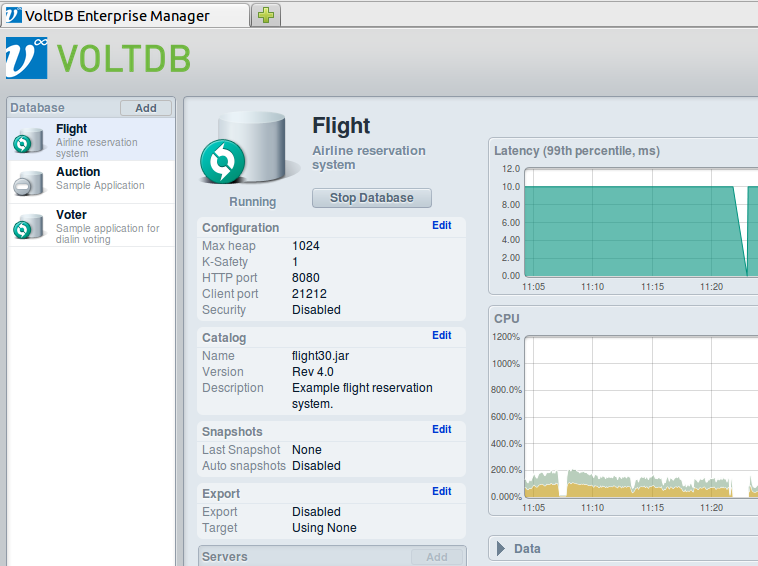VoltDB hits proverbial version 3.0

In the software world, many people believe that products reach true maturity and value in their third version. A first release is about bringing an idea to market, and second releases act to stabilize the first. But it's "v3" that really incorporates refinements that reflect user feedback and market lessons learned. It seems to me that "NewSQL" database player VoltDB is following that pattern with its own 3.0 release.
There's a NewSQL in town
NewSQL databases are designed to provide the scale-out advantages of NoSQL databases, and often their commodity hardware friendliness as well. But NewSQL databases maintain the transactional data consistency guarantees of traditional relational databases, as well as their compatibility with SQL for queries and connectivity (using technologies like ODBC and JDBC).
VoltDB focuses on using in-memory technology to perform in situ analysis on financial, clickstream, gaming, and other high-velocity data as it streams in. In the company's own words, VoltDB is meant to "narrow the 'ingestion-to-decision' gap."
Granular value
In my interview with VoltDB president and CEO Bruce Reading, he shared a chart, with two lines of inverse slope. One line represented the value of transactional data, which decreases over time, and the other represented the value of aggregate data, which increases over time. On first inspection, one might infer the chart provides an endorsement of aggregate analysis and a denigration of the value of transactional data. Business Intelligence is practically based on that premise, after all.
But what VoltDB is saying is actually something of the reverse: It's not that transactional data is low value, but rather that you squander the value of transactional data unless you analyze it as it is being recorded. SAP said much the same thing earlier this month, as it announced the availability of its Business Suite on its HANA in-memory data platform, and fellow NewSQL player NuoDB uses in-memory and asynchronous technology to facilitate similar real-time analyses.

New for 3.0
In this new release, VoltDB adds a number features that fit the v3 profile. For instance, there's substantially stronger SQL compatibility, both for stored procedures and dynamic SQL queries. The product now also boasts new high-speed export connectors for IBM Netezza and HP Vertica, as well as JDBC data targets generally, and is introducing a public export API so that more such connectors can be built by second and third parties.
The enhanced SQL support will entice developers, as will a few other features, including new client libraries (for PHP, Node.js and Google's Go programming language) and explicit support for data in JavaScript Object Notation (JSON) format.
VoltDB 3.0 also adds optimizations for multi-core hardware and 10Gb Ethernet networks. One of my biggest gripes with big-data tools is that many of them achieve parallelism by adding server nodes to a cluster rather than optimizing parallelism with a single node. It would appear VoltDB is sensitive to this, and the addressing of it has a definite v3 flair to it.
Grand unification?
Conventional relational databases and NoSQL databases seem to be at opposite ends of a spectrum. NewSQL databases acknowledge the merits in both models and seek to eliminate unreasonable compromise by marrying the approaches. NewSQL products may thus win out, but traditional relational database players may also incorporate NoSQL and NewSQL features to stay competitive. Perhaps that's why Microsoft announced in November that the next major release of its SQL Server relational database will include an in-memory transactional database engine, codenamed "Hekaton."
Whatever the outcome, the largely stable, conservative enterprise database space has been disrupted, and the disrupting technologies have real merit. Some of them even have v3-caliber maturity.
Also read: